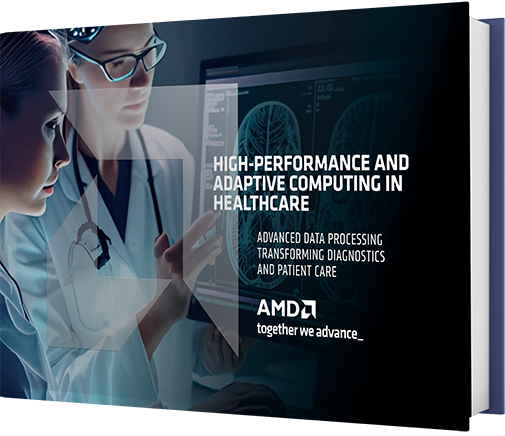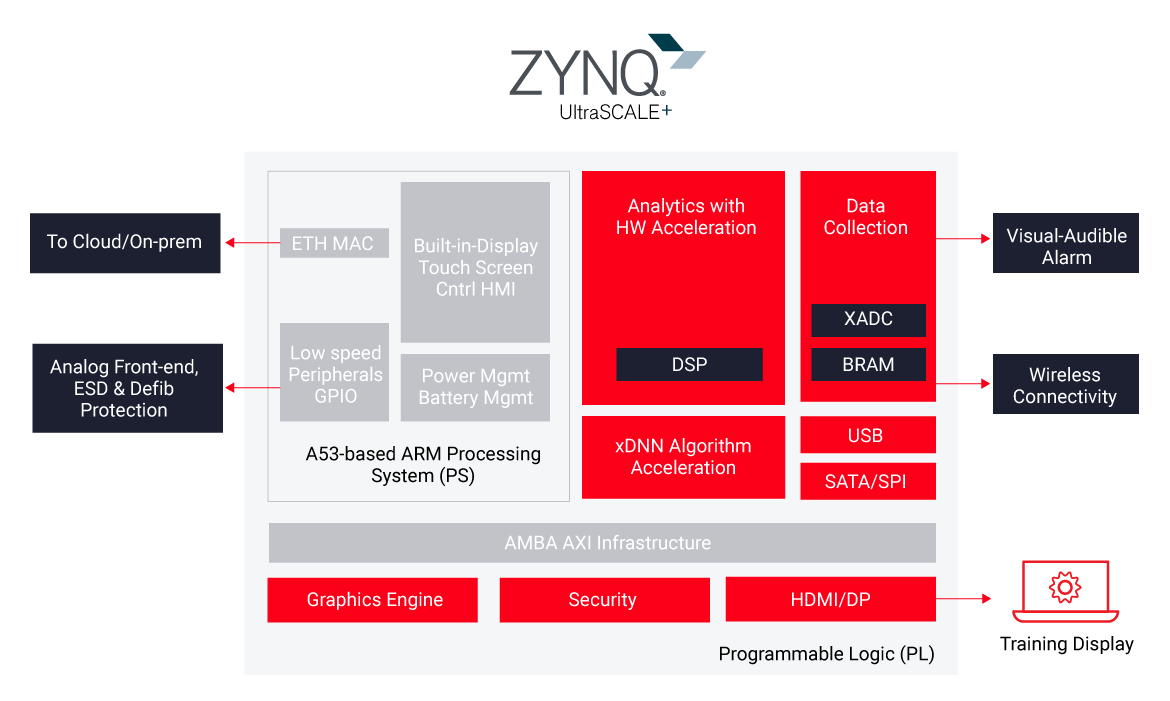- Applications
- Medical
- Clinical Defibrillators and Automated External Defibrillators (AEDs)
Automated External Defibrillators
(AEDs) and Clinical Defibrillators
Deliver life-saving defibrillators with faster response time
and reliability with high performance multiprocessing
AEDs can be thought of as an electrocardiogram or ECG, or a multi-parameter patient monitor, that also provides life-saving therapy. ECGs monitor heart signals via electrodes connected to specific locations on the human body. These signals, on the order of a few millivolts in amplitude, are difficult to discern against a noisy background, but are used to accurately determine a person’s QRS complex.
The QRS complex is what’s commonly used by doctors to diagnose a wide range of heart conditions, such as arrhythmia or even atrial or ventricular fibrillation. The AED uses the same QRS complex to make the decision to provide therapy, or the shock to restart or resynchronize the heart.
Reliability, easy-to-use HMI, accuracy, fast boot times, power management, and security are just some of the key considerations for AEDs. These systems need to have the processing power powerful enough to acquire, process, and interpret several parameters at once, while also providing a friendly, straightforward, and safe HMI.
A simplified architecture of a typical AED can have a built in SVGA resolution display, a touch screen HMI and potentially a separate external display connectivity to a high-definition monitor to provide training or maybe showing a related video. Modern AEDs are getting networked with wired and wireless connectivity.
Design Example
Here is a high-level block diagram to create a smart, connected, high performance low power AED device with a single core, dual or quad core Zynq Ultrascale+ MPSOC with an optimally configured fabric depending on the performance per watt and BOM cost requirements. Depending on the architectural requirements and if it’s a lower-end AED, a Zynq 7000 device can also be used. The new ZU1 MPSoC along with the rest of the Zynq Ultrascale+ family of products provide the scalability to create low to high-end AED devices using the same software footprint at low power and cost. Additionally, the customer can choose to design with the new AMD Kria SOM module for faster time to market.
Defibrillators can be smart and connected to the network in the back-end. A smart Defib/Monitor (like a patient-vest) would have the capability to send secure data to the cloud (Hybrid or Private) for analytics and storage. It will also be able to support local and networked high-definition displays.
The processing systems in a Zynq UltraScale+ family of SoC-FPGA devices are very powerful and competitive to any ASSP devices available today. A complex architecture could support using a hypervisor with guest OS versions running Linux for a variety of tasks like control plane, monitoring, diagnostics and analytics. Many supported RTOS like QNX, VxWorks, Micrium or ThreadX can be used for real-time tasks.
So, here are a few points to summarize the benefits of a Zynq UltraScale+ based clinical architecture:
- Real-Time signal processing,
- Safety implementation potentially with TMR ensuring low risk and high reliability
- Support for all sensory types with flexible customizable I/O
- An integrated xADC block for simple sensors and direct analog sensory connection with enhanced digital filtering, lower latency sensor monitoring and a high speed parallel digital Interface to the FPGA fabric
- Use FPGA fabric to process critical events in real time with no need to wait for processor
- Handle your graphics needs and display processing into multiple displays with same or different content seamlessly
And, handle other intensive tasks as required with a combination of powerful embedded processors and offload to FPGA as needed.

High-Performance and Adaptive Computing in Healthcare
New advances in technology are helping revolutionize the healthcare landscape. Download our eBook to uncover key industry challenges and learn how technology creates new ways to treat and diagnose diseases, power research, and enable doctors to perform surgeries with greater precision.




